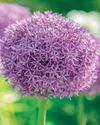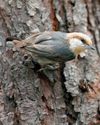
Secrecy and stealth, plus the cover of darkness, keep most owls out of sight. Seeing one is so special, youmight think these raptors are rare birds. But they’re actually all around you, hidden in plain sight.
To avoid discovery, owls perch motionless, nearly invisible in their superb camouflage. Still, other birds sometimes spot them and immediately raise a ruckus—so when you hear that kind of commotion, take a look.
And tune in at night, when most species are hootin’ and hollerin’, each with its own unique voice. Once you start listening for owls, you’ll discover they’re not rare birds at all—but definitely remarkable!
GREAT HORNED OWL
The deep hoots of these big birds (with a wingspan of 4½ feet!) are heard at night across North America in every habitat, even in cities. They’re most vocal in winter, so bundle up and step outside for a listen. Their favorite food? Skunks! But their full menu is a long one, including crows and other birds, frogs, shrews, bats, rabbits and other small mammals.
BARRED OWL
Known for its call, Who cooks for you? Who cooks for you all?, this common, noisy species of the East, Midwest and Northwest is mostly nocturnal. Unlike many of its relatives with yellow eyes, the barred owl has dark eyes, which enhance its mysterious appearance.
SCREECH-OWL
This story is from the October/November 2019 edition of Birds & Blooms.
Start your 7-day Magzter GOLD free trial to access thousands of curated premium stories, and 9,000+ magazines and newspapers.
Already a subscriber ? Sign In
This story is from the October/November 2019 edition of Birds & Blooms.
Start your 7-day Magzter GOLD free trial to access thousands of curated premium stories, and 9,000+ magazines and newspapers.
Already a subscriber? Sign In

Basics of Hydroponics
Use these top tips and plant picks to have a successful soil-free garden

Rooted in Resilience
These hardy perennials will thrive in most zones

Social and Supportive
Brown-headed nuthatches take a helpful approach to raising their young

All About Owl Pellets
And why you should give a hoot about them

Ask the Experts
Advice from our pros about houseplants, bird feeding and more

BRING THE OUTDOORS IN
Making a terrarium is about as close as you can get to a Zen DIY project. Once you have gathered the proper materials and squared away your plant selections, it's as simple as layering it all together and watching your mini ecosystem thrive. Here, I'll walk you through my foolproof process and cover all the required elements for good filtration, healthy soil, strong root growth and resistance against fungus and disease.

GROW THIS. NOT THAT
Six easy-to-grow houseplants—and six that may not be the right choice for you

Winter MAGIC
Forecasts may be frigid, but grab your binoculars because birding opportunities are still incredible

Sense or Nonsense? - Why some birds can taste and smell - but others can't
Does a porcelain berry taste like a blueberry to a gray catbird? Does a block of lard smell like frying bacon to a northern flicker? The short answer is no. While some avian species do have a well-adapted sense of taste or smell, they can't distinguish between flavors and odors the way humans can. They're not picking up every ingredient in the suet you put out, says José Ramírez-Garofalo, an ornithology researcher at Rutgers University in New Jersey and the director of Freshkills Biological Station in Staten Island, New York.

Maple Mania - Amazing facts about this fall foliage mainstay
Amazing facts about this fall foliage mainstay